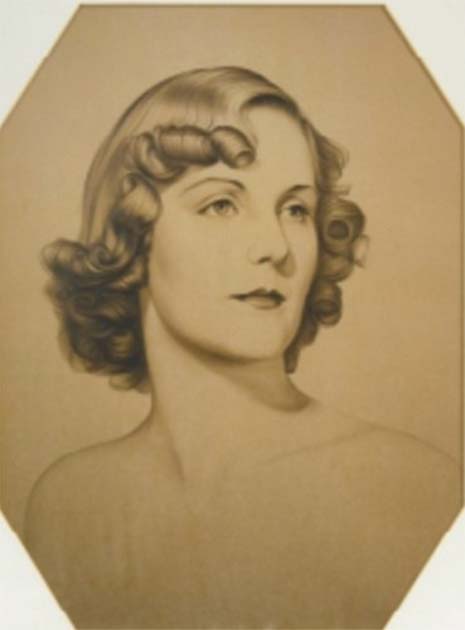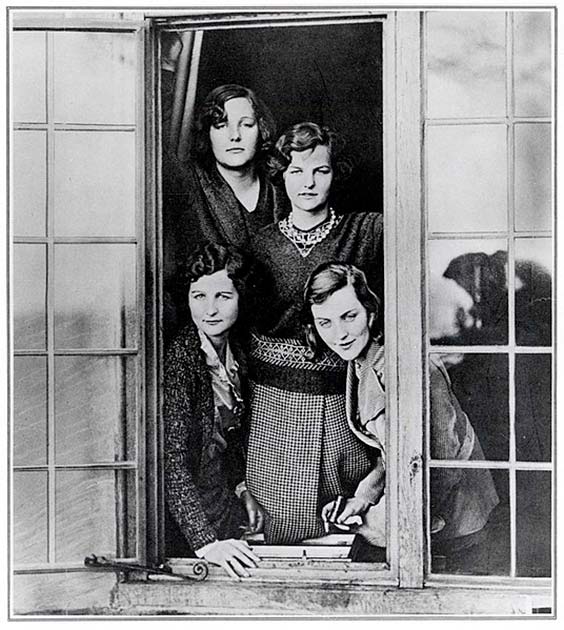The Mitford family is a well established and respectable one, of the old stock and with their roots deep in Northumberland society. Over the years family members have served as high-sheriff of that wildest of northern English counties, a prestigious role.
But something strange happened to this family in the 1930s. Six of the family members, sisters all, caught the attention of society for their forward thinking, for their scandalous affairs, and above all for being completely different from each other.
This is the story of the six Mitford sisters.
Six of the Best
It is best to understand their differing views as a microcosm of British society at the time. Britain had been shaken to its core along with much of Europe a generation before, by the Great War.
Shellshocked by the loss of a generation of young men, facing the fall of the Russian Empire and the death of a Tsar, and scrambling to tackle some radical political ideas which were forcefully reshaping a continent, the Mitford sisters adapted, each to their own.
In this way a British upper-class family was torn apart by Europe’s terrible ideals and the struggle to find the right way forward. Some saw the future in Communism, feeling the Russia was only the first of the old power blocks to fall. Some felt the answers were at the other end of the spectrum, with German extremism and Hitler.
And so each sister answered this question for herself. Jessica was a Communist; Pamela likely lesbian at a time when such a thing was scandalous inn the extreme. Debo married the Duke of Devonshire; Nancy was a best-selling author of her day; Diana became engaged to the British fascist Sir Oswald Mosley; and Unity, a close friend of Hitler, shot herself in the head when England and Germany went to war.

For this to happen to a family who could trace their line back a thousand years to the Norman Conquest should make it clear that what was happening in Britain was no small upheaval. And in this we also saw something more fundamental, underpinning everything and again a direct result of the Great war: the rising empowerment of women.
- Julie D’Aubigny: Iconic French Pre-Revolutionary Bisexual Opera Star
- Julia Child and her Years Working for US Intelligence
Nancy Mitford, the oldest, perhaps enjoyed this increasing liberty in the most direct fashion. Divorcing her husband, she entered into a long-lasting relationship with a French salesman. She spent most of her life in France where she clearly felt that she didn’t need to be married to enjoy herself. She wrote multiple novels, including The Pursuit of Love and Love in the Cold Climate.
The second sister, Pamela Mitford, was described by the poet John Betjeman as the “Rural Mitford” for her love of the outdoors. It has been convincingly argued that Betjeman was in love with her, part of a coterie of fascinated men who surrounded the sisters.
She married a millionaire but, like her older sister, found the traditional life to be dull. Divorcing, she spent the rest of her life living with an Italian lady with a love of horses named Giuditta Tommasi.
Fascism and Communism
Diana Mitford, the third sister, married the writer and aristocrat Bryan Guinness, heir to a baronetcy and a fortune made from brewing the black stuff, in 1929. She would also end up divorcing her husband, but unlike her elder sisters she would remarry.
Her new husband was Oswald Mosley, the British aristocrat who had become disillusioned with mainstream politics in the 1920s and reinvented himself as a champion of fascism.
Diana had long been Mosley’s mistress while his wife was still alive, and the death of the latter in 1933 finally allowed the couple to marry. They wed in 1936 in Nazi Germany at the house of Joseph Goebbels, with Adolf Hitler as the guest of honor. The couple would go on to have two sons.

Unity Mitford, the next sister was also attracted to the tenets of National Socialism. She was a fierce and devoted admirer of Hitler, whom she considered a personal friend.
Sadly, her story was also far more tragic than that of her sisters. In the weeks after Britain declared war on Germany she attempted suicide, shooting herself in the head with a pistol. Although she did not die she remained disabled for the rest of her life She died in Oban in northern Scotland in 1948.
There couldn’t be more of a contrast between Diana and Unity, and the next sister, Jessica. “Decca,” Mitford was a communist. Eloping with the British socialist Esmond Romilly, she travelled to Spain to participate in the Civil War.
They eventually migrated to the United States, where she would remarry, her husband having been killed during World War Two. She remained a member of the American Communist Party until 1958.
She published memoirs and controversial works, notably the best-selling The American Way of Dying (1963), on the funeral business. She was the grandma of James Forman Jr. & Chaka Forman, the children of African-American civil liberties pioneer James Forman, through her own child Constancia Romilly.
- When Women Ruled the Papacy: Marozia and the Pornocracy
- Marita Lorenz: The Spy Who Fell in Love with Castro
Deborah “Debo” Mitford, the youngest, decided to ignore the societal unheaval and stick to the traditional. She married Andrew Cavendish, afterward Duke of Devonshire, and then together they developed his family home Chatsworth House into one of the most successful stately homes in the United Kingdom.
Deborah was frequently mocked, perhaps for this lack of imagination. Her elder sister Nancy maliciously nicknamed her “Nine”, claiming it was her mental age.
The sisters had only one brother named Thomas Mitford. He was also a fascist, and on the outbreak of war he refused to sign up to fight the Germans as a point of principal. He had no concerns about fighting Imperial Japan however, and was shipped off to the Pacific theatre where he was killed in action in Burma in 1945.
Tumult in Miniature
So, two fascists and a communist. Two living in sin, one married into the very heart of aristocratic Britain. Two married the nephews of British Prime Ministers, and two who befriended Hitler.

In many ways these divergent paths show Britan between the wars in microcosm. It is often easy to look at history as a pre-ordained paths, and fall into the trap of thinking that things could not have ended any other way than they did.
But, with these six sisters, each choosing their own path, you can see the enormous, seismic struggles that Britain faced between the wars. In miniature, you can see that things might have turned out very differently indeed.
Top Image: The Mitford sisters and brother Tom, flanked by their parents. Front from left to right: Unity, Jessica and Deborah. Middle from left to right: Diana and Pamela. Back: Nancy. Source: Unknown Author / Public Domain.
By Bipin Dimri